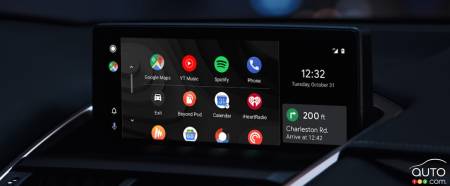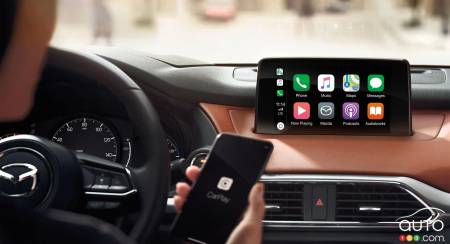Technology is increasingly omnipresent on board today’s newer vehicles, not surprising given that it delivers both increased convenience and more safety. That said, while features such as blind spot monitoring, pedestrian detection and adaptive cruise control make cars safer, other technological innovations inside the vehicle are making driving more distracting and dangerous.
This is according to a new study by IAM RoadSmart, a UK road safety organisation established in 1956, indicates that using Apple CarPlay and Android Auto while driving is more dangerous than driving while drunk.
That’s quite a strong statement, but the organization says its results are unequivocal: the use of the touchscreen interfaces of Apple CarPlay and Android Auto increases driver reaction times more than alcohol in the system (at the legal limit), but also more than do text messaging, cannabis use and telephone conversations.
The study found that drivers sometimes take their eyes off the road for periods of up to 16 seconds when using either system. Which works out to more than 500 metres traveled at 113 km/h.
Auto123 launches Shopicar! All new makes and models and all current promotions.

The study showed that drivers who were at the legal limit for alcohol had their reaction time slowed by 12%, while cannabis users have 21% slower reaction times. Those who send text messages see their reaction time decrease by 35% while driving, and those who make phone calls have a 46% increase in reaction time.
For Android Auto and Apple CarPlay users? Reaction times jumped by 53% and 57%, respectively. Even voice commands on both systems slowed reaction times by 30 and 36%, in the same order. Increased distractions affected both braking distances and the ability to keep the vehicle in its lane.
The study also found that drivers underestimated the time they spent looking away from the road by up to five seconds. Study participants did not respond to external stimuli when using either system, with some reaction times slowed by as much as 50%.
The study is a sobering reminder that as convenient as new technologies can be, they don’t always ensure a safer, less distracted drive.
Food for thought.



